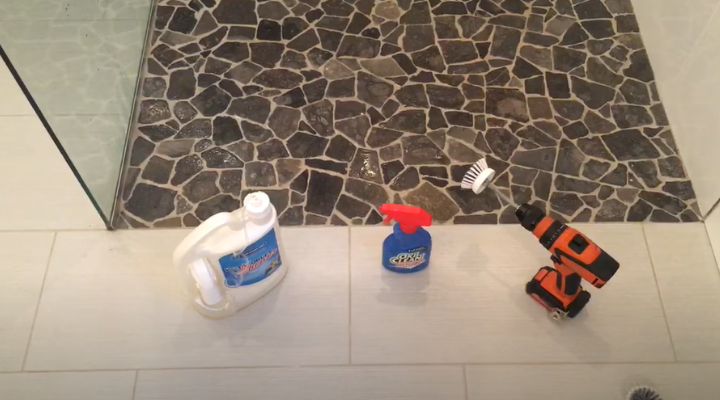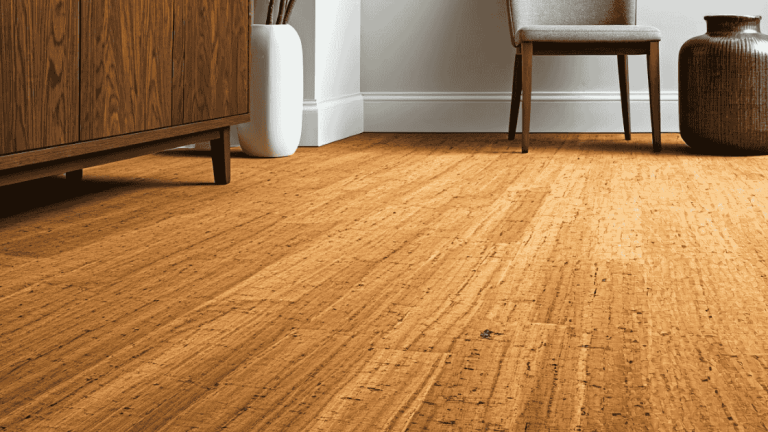How to Clean Stone Shower Floor: 7 Expert Tips for Sparkling Results
Are you facing the stone shower floor as dirty and slippery? Now want to know how to clean stone shower floor? The Best practices are here for you to not damage your stone floor.
This step-by-step guide will help you clean and maintain as best as possible. The guide will make it more effective as much as you can.

Before starting you need to know some things about the stone floor and its necessary supplies. Stone floors are likely many types like Marble, travertine, granite, and slate are common. So it needs to be cleaned differently depending on the type of floor.
So, Firstly I will show which parts are different and consider these types. The difference is in the cleaner. you can see the table recommended cleaning methods for different types of stone shower floors:
| Stone Type | Recommended Cleaner | Avoid | Additional Care |
|---|---|---|---|
| Marble | pH-balanced cleaner for marble | Abrasive scrubbing pads | Use a soft cloth or sponge to prevent scratching. |
| Travertine | Mild, pH-balanced cleaner | Acidic or abrasive solutions | Regularly seal to protect from water damage and stains. |
| Granite | Stone-safe cleaner or mild dish soap | Harsh chemicals, acidic substances | Be cautious with abrasive tools, and avoid prolonged exposure. |
| Slate | Gentle stone cleaner or mild soap | Harsh abrasives, strong acids | Regularly reseal to maintain natural beauty and protect from water. |
Anyway, The main factor is to use mild and pH-balanced cleaners for all stones. And this is the safe option that you can do. So, how to start the cleaning process? yes, we will now drive into the guide. Before starting, we need cleaning supplies that help start:
Gathering Necessary Cleaning Supplies
- Mild pH-neutral stone cleaner
- Soft-bristled brush or sponge
- Microfiber cloth or soft towel
- Protective gloves
- Bucket of warm water
- Sealer (if applicable)
Let’s start with a step-by-step guide on how to clean stone shower floor effectively:
Step #1. Remove Surface Debris:
Start by removing loose dirt, hair, and debris from the stone floor. Use a soft brush or a dry microfiber cloth to sweep away the surface particles.
Step #2. Preparing the Area:
Wet the stone floor with water to prepare it for cleaning. This helps loosen dirt and makes the cleaning process more effective.
Step #3. Choose a pH-neutral Stone Cleaner:
Select a pH-neutral stone cleaner specifically designed for the type of stone in your shower. Acidic or abrasive cleaners can damage the stone, so it’s crucial to use a safe product for natural stone surfaces.
Step #4. Dilute the Cleaner if Necessary:
Follow the manufacturer’s instructions for diluting the stone cleaner if it’s concentrated. Diluting it appropriately ensures effective cleaning without causing harm to the stone.
Step #5. Apply the Cleaner:
Spray or apply the stone cleaner evenly across the shower floor. Pay extra attention to areas with visible stains, soap scum, or mildew.
Step #6. Scrub Gently:
Use a soft-bristle brush, a non-abrasive scrubbing pad, or an old toothbrush to scrub the stone surface gently. Focus on grout lines and areas with buildup. Avoid using stiff brushes or scouring pads that can scratch the stone.
Step #7. Clean Grout Lines:
For grout lines, consider using a mixture of baking soda and water to form a paste. Apply the paste to the grout lines, let it sit for a few minutes, and then scrub with a grout brush or an old toothbrush.
Step #8. Rinse Thoroughly:
Rinse the shower floor thoroughly with water to remove the cleaner and loosened dirt. Use a handheld showerhead or a bucket of water for rinsing.
Step #9. Remove Residual Soap Scum:
If soap scum is still present, mix equal parts white vinegar and water. Apply this solution to the affected areas, let it sit for a few minutes, and then scrub gently. Rinse thoroughly.
Step #10. Dry the Stone Surface:
Wipe down the stone surface with a clean, dry cloth or a squeegee to remove excess water. This helps prevent water spots and ensures the stone dries properly.
Step #11. Seal the Stone (Optional):
If your stone shower floor is unsealed or if the sealant has worn off, consider applying a stone sealer according to the manufacturer’s instructions. Sealing helps protect the stone from future stains and makes cleaning easier.
Step #12. Regular Maintenance:
To maintain a clean stone shower floor, wipe down the surfaces regularly after each use to prevent the buildup of soap scum and grime. Use a squeegee or a microfiber cloth for quick wipe-downs.
Note: Always check the care instructions provided by the manufacturer or installer of your specific stone type. Different stones may have unique care requirements.
By following these steps and exercising care during the cleaning process, you can keep your stone shower floor looking clean, vibrant, and well-maintained.
Recommended Maintenance Routine For Long-lasting Cleanliness
- Regular cleaning: Clean the stone shower floor with a pH-neutral cleaner on a regular basis to remove dirt, soap residue, and mineral deposits. This will prevent the build-up of grime and maintain the stone’s natural luster.
- Avoid harsh chemicals: Refrain from using harsh cleaning agents or acidic solutions, as these can damage the stone surface and strip away the protective sealant. Opt for gentle, non-abrasive cleaning products to preserve the integrity of the stone.
- Re-sealing: Periodically re-seal the stone shower floor to bolster its resistance against moisture and stains. This proactive approach enhances the durability of the stone and ensures that it continues to exude elegance and sophistication.
- Preventative measures: Implement preventive measures such as using mats or towels to absorb excess water and prevent the accumulation of moisture on the stone shower floor. This helps minimize the risk of mold and mildew growth, thus preserving the pristine condition of the stone.
Related Queries:
How Often Should I Clean My Stone Shower Floor?
You should clean your stone shower floor at least once a week to prevent the buildup of soap scum, mold, and mildew. Regular cleaning will maintain its appearance and prevent long-term damage.
What Is The Best Cleaning Solution For Stone Shower Floor?
To clean a stone shower floor, use a pH-neutral cleaner specifically designed for natural stone. Avoid harsh chemicals like vinegar or lemon juice, as they can damage the stone surface over time.
Can I Use A Scrub Brush To Clean My Stone Shower Floor?
Yes, you can use a soft-bristled scrub brush to clean your stone shower floor. However, avoid using abrasive materials or harsh scrubbers that may scratch or damage the stone surface. A gentle scrubbing action will effectively remove dirt and grime.
Final Words:
Cleaning a stone shower floor requires regular maintenance and the use of mild, natural cleaning solutions. By following the specific steps outlined in this guide, you can ensure that your stone shower floor remains in top condition for years to come.
Remember to always test any new cleaning method on a small, inconspicuous area first to avoid any potential damage. With proper care, your stone shower floor will continue to be a beautiful and functional part of your bathroom.
By the way, if you are interested in cleaning pebbles shower floor, you can continue with How To Clean Pebble Shower Floor: Ultimate Cleaning Guide





